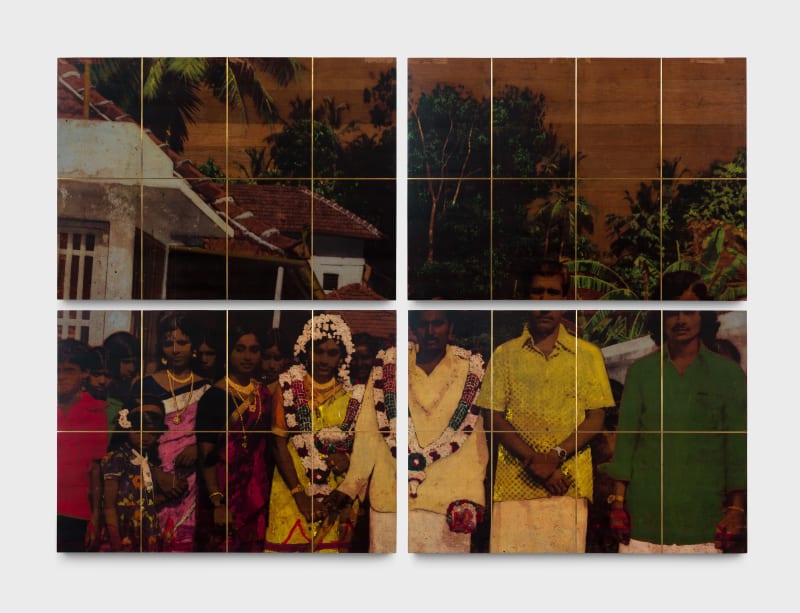Rajiv Menon Contemporary is pleased to announce 11th May 1980 Wedding Day, a solo presentation of recent work by Mumbai based artist Saju Kunhan. Building upon a body of work based in familial memory around a specific wedding in Kerala in the 1980s, Kunhan's practice uses a combination of image transfer and painting to reminisce on the act of remembering itself. Kunhan’s broader practice engages with history not as a fixed record but as a constellation of recollections—shaped by subjectivity, distortion, and the act of remembrance itself.
Kunhan's technique of transferring archival photographs onto recycled teak wood becomes a way of reanimating fragments of the past, while underscoring the instability inherent in how histories are preserved and retold. Image transfer in Kunhan's practice is an act of migration, reflecting the flow of people and culture between Kerala and the world, across time and space.
In Kunhan's work, recycled teak is living, breathing medium like memory itself, given second life through his practice. This body of work takes as its source black-and-white images from a family wedding album from before Kunhan's birth. By layering hand-painted color onto digitally printed photographs, later transferred onto wooden panels, Kunhan imbues the time-weathered moments depicted in these images with renewed vibrancy. He has described this gesture as an attempt to “add some color to their existence.”
Displayed in sequential panels, the installation reads as a corridor of memories, each image hovering between personal recollection and collective history, inviting viewers to reflect on the ways in which family narratives endure. His grids function both as formal structures and as metaphors—recalling maps, demarcations, and trajectories. They subtly reference broader concerns of migration, belonging, and displacement that run through the artist’s practice. Kunhan’s body of work navigates the delicate line between private memory and collective experience, proposing that what endures in history may be less the material evidence than the faint and persistent impressions carried within us.

